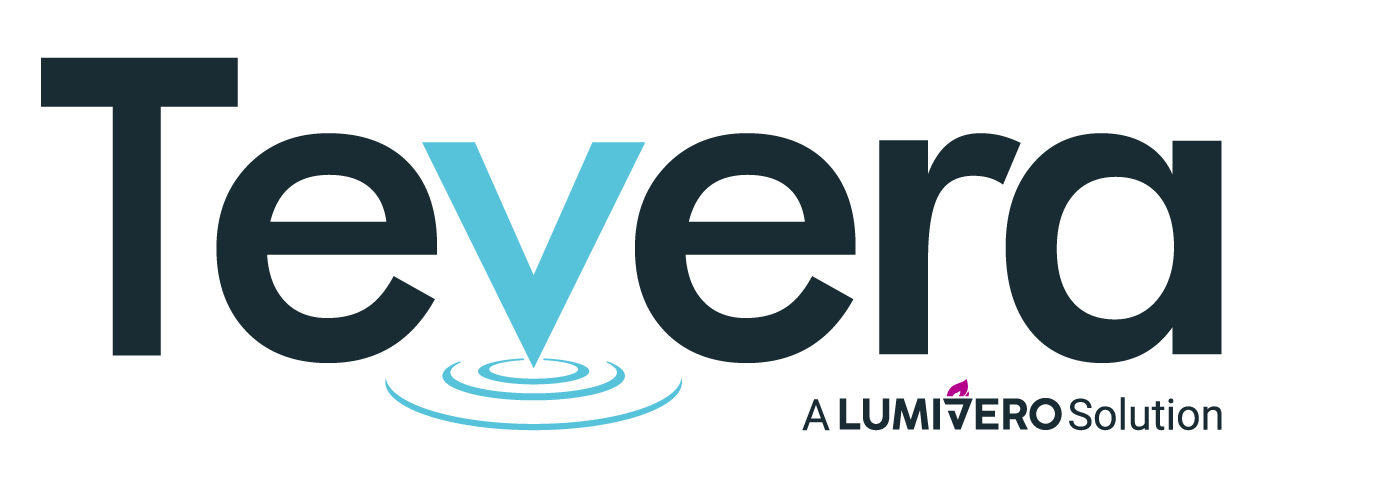5 Steps to Build a Successful Field Education Program
Field placements are a critical point in a student’s career. It’s also crucial for program administrators to keep your field supervisors happy and to help your students eventually achieve gainful employment. Creating a system that makes it easy for everyone involved can be daunting.
Here are five things to keep in mind as you build your program and set it up to be a great experience for everyone involved.
1. Optimize field placements by “matchmaking.”
How do your students get matched to their field placement? Do you provide assistance or advice? Or are they left to their own devices? While there’s no one right way to pair a student and a site together, programs that spend time on helping make successful pairings help both students and field supervisors.
Your students enrolled in your program for a reason. They have a passion to help others and it’s likely they have a vision for their future career. Hopefully this passion matches their personality and skills but schools that help students truly understand their motivations help set them up for long-term success, even after their internship. Tools like personality and motivation assessments are used in business every day to provide teams and individuals with a deeper understanding of themselves. They can also be applied to academic programs.
Since agencies vary widely from correctional facilities to adoption centers to counseling centers at schools, it’s imperative that students are matched as close to their future placement as possible. Students should, at a minimum, have a feeling about where they would like to work once they achieve licensure and should find an internship or field work that matches their passion. Schools can help students identify which placements will be best for them by helping them with motivational and career tools and emphasizing the importance of tapping into career resources.
2. Simplify communication between field sites, students, and your program.
In school, as in business, as in life, communication is king. Poor communication can ruin a student’s experience or irreparably damage your program’s relationship with a field site. Give your students the resources and knowledge they need to navigate their experience successfully. Facilitate communication between your program and your site supervisors so they feel connected to your program without having to do additional work.
Set expectations up front – Help your students understand what it takes to have a great experience. Help them make it easy on the field instructors as you need to keep them happy year after year.
Tip #1: Most institutions have career services. Partner with them to provide training, especially if your students don’t have prior professional experience. Just because your students know their career path doesn’t automatically mean they’re ready to walk into a professional setting.
Tip #2: Prepare an email guide or a brochure with simple tips that students can reference. If you’re not sure what to include, ask students who’ve completed their field placement to see what they wish they had known. Keep in mind that what you think is obvious, may not be to your students. Including tips on dress code and office norms can go a long way.
Make it easy – a portal that tracks communications between site supervisors, students, and the program is crucial to facilitate a great experience for all. If the system keeps messages as records, it can also be useful for later reference for involved parties to continue learning or for reporting purposes.
3. Add in time-tracking software.
Help your students be successful by setting them up with an easy-to-use time-tracking tool. Since students are always on the go, it’s ideal to find a time-tracking tool they can use on a mobile device so they can enter time while they’re walking or on a bus. If they have to wait to get back to their computer, too often they forget.
If you’re wondering why you should choose a time-tracking software versus Excel or paper, you’re not alone. While the old, tried-and-true methods can work, they’re limited. Software, on the other hand, offers versatility. Not only does it make it easier for students to stay on top of their time management but it allows program admins to get a peek into whether students are on track, or falling behind.
4. Streamline reporting.
One of the keys to building a sustainable field education program is being able to tell how well your sites perform and how well your students do while they’re out in the field. Having the data you need at your fingertips is great. Even better, being able to generate reports with a click or two will save you tens of hours over the course of a year. You need it to help with accreditation as well as making informed business decisions. Plus, having it all in one place helps reduce human error as the rate of typos are reduced when there’s no need to transfer data from one system to another.
5. Find software and a team that you can rely on.
Whether you want an all-in-one tool or prefer to piecemeal it, choosing the right software is key. It needs to have features that work for you, be easy to use, and be affordable. Most importantly, you need to be able to trust the team behind the software to be accessible and responsive. Be aware that there are many software options out there. Some take a one-size-fits-all solution while others take a tailored, made-for-your-program approach. Choose what makes you most comfortable.
P.S. Make it Easy for Your Field Supervisors
If you make it easy for field supervisors to work with you, they’ll want to work with you. They have a full workload and are taking on educating students as an additional responsibility. Make your program the one that all the sites want to partner with because they can easily communicate with students and your program as well as track students’ progress. Help them help you and it will go a long for your reputation and building a long-lasting partnership.
Building a strong network of supervisors isn’t something that happens overnight. Investing in a good software program can set you apart from other programs as well as help your students and field partners succeed.
Take a Look at Tevera
Tevera is a field education management software designed to help your program prepare their students for successful careers. Contact us today to learn more about how our software can streamline communications, simplify time-tracking, and help you build the field education component of your program into a resounding, repeatable success.
SOLUTIONS
RELATED POSTS
PRODUCT OVERVIEW
See how Tevera can elevate your program.
5 Steps to Build a Successful Field Education Program
Field placements are a critical point in a student’s career. It’s also crucial for program administrators to keep your field supervisors happy and to help your students eventually achieve gainful employment. Creating a system that makes it easy for everyone involved can be daunting.
Here are five things to keep in mind as you build your program and set it up to be a great experience for everyone involved.
1. Optimize field placements by “matchmaking.”
How do your students get matched to their field placement? Do you provide assistance or advice? Or are they left to their own devices? While there’s no one right way to pair a student and a site together, programs that spend time on helping make successful pairings help both students and field supervisors.
Your students enrolled in your program for a reason. They have a passion to help others and it’s likely they have a vision for their future career. Hopefully this passion matches their personality and skills but schools that help students truly understand their motivations help set them up for long-term success, even after their internship. Tools like personality and motivation assessments are used in business every day to provide teams and individuals with a deeper understanding of themselves. They can also be applied to academic programs.
Since agencies vary widely from correctional facilities to adoption centers to counseling centers at schools, it’s imperative that students are matched as close to their future placement as possible. Students should, at a minimum, have a feeling about where they would like to work once they achieve licensure and should find an internship or field work that matches their passion. Schools can help students identify which placements will be best for them by helping them with motivational and career tools and emphasizing the importance of tapping into career resources.
2. Simplify communication between field sites, students, and your program.
In school, as in business, as in life, communication is king. Poor communication can ruin a student’s experience or irreparably damage your program’s relationship with a field site. Give your students the resources and knowledge they need to navigate their experience successfully. Facilitate communication between your program and your site supervisors so they feel connected to your program without having to do additional work.
Set expectations up front – Help your students understand what it takes to have a great experience. Help them make it easy on the field instructors as you need to keep them happy year after year.
Tip #1: Most institutions have career services. Partner with them to provide training, especially if your students don’t have prior professional experience. Just because your students know their career path doesn’t automatically mean they’re ready to walk into a professional setting.
Tip #2: Prepare an email guide or a brochure with simple tips that students can reference. If you’re not sure what to include, ask students who’ve completed their field placement to see what they wish they had known. Keep in mind that what you think is obvious, may not be to your students. Including tips on dress code and office norms can go a long way.
Make it easy – a portal that tracks communications between site supervisors, students, and the program is crucial to facilitate a great experience for all. If the system keeps messages as records, it can also be useful for later reference for involved parties to continue learning or for reporting purposes.
3. Add in time-tracking software.
Help your students be successful by setting them up with an easy-to-use time-tracking tool. Since students are always on the go, it’s ideal to find a time-tracking tool they can use on a mobile device so they can enter time while they’re walking or on a bus. If they have to wait to get back to their computer, too often they forget.
If you’re wondering why you should choose a time-tracking software versus Excel or paper, you’re not alone. While the old, tried-and-true methods can work, they’re limited. Software, on the other hand, offers versatility. Not only does it make it easier for students to stay on top of their time management but it allows program admins to get a peek into whether students are on track, or falling behind.
4. Streamline reporting.
One of the keys to building a sustainable field education program is being able to tell how well your sites perform and how well your students do while they’re out in the field. Having the data you need at your fingertips is great. Even better, being able to generate reports with a click or two will save you tens of hours over the course of a year. You need it to help with accreditation as well as making informed business decisions. Plus, having it all in one place helps reduce human error as the rate of typos are reduced when there’s no need to transfer data from one system to another.
5. Find software and a team that you can rely on.
Whether you want an all-in-one tool or prefer to piecemeal it, choosing the right software is key. It needs to have features that work for you, be easy to use, and be affordable. Most importantly, you need to be able to trust the team behind the software to be accessible and responsive. Be aware that there are many software options out there. Some take a one-size-fits-all solution while others take a tailored, made-for-your-program approach. Choose what makes you most comfortable.
P.S. Make it Easy for Your Field Supervisors
If you make it easy for field supervisors to work with you, they’ll want to work with you. They have a full workload and are taking on educating students as an additional responsibility. Make your program the one that all the sites want to partner with because they can easily communicate with students and your program as well as track students’ progress. Help them help you and it will go a long for your reputation and building a long-lasting partnership.
Building a strong network of supervisors isn’t something that happens overnight. Investing in a good software program can set you apart from other programs as well as help your students and field partners succeed.
Take a Look at Tevera
Tevera is a field education management software designed to help your program prepare their students for successful careers. Contact us today to learn more about how our software can streamline communications, simplify time-tracking, and help you build the field education component of your program into a resounding, repeatable success.
5 Steps to Build a Successful Field Education Program
Field placements are a critical point in a student’s career. It’s also crucial for program administrators to keep your field supervisors happy and to help your students eventually achieve gainful employment. Creating a system that makes it easy for everyone involved can be daunting.
Here are five things to keep in mind as you build your program and set it up to be a great experience for everyone involved.
1. Optimize field placements by “matchmaking.”
How do your students get matched to their field placement? Do you provide assistance or advice? Or are they left to their own devices? While there’s no one right way to pair a student and a site together, programs that spend time on helping make successful pairings help both students and field supervisors.
Your students enrolled in your program for a reason. They have a passion to help others and it’s likely they have a vision for their future career. Hopefully this passion matches their personality and skills but schools that help students truly understand their motivations help set them up for long-term success, even after their internship. Tools like personality and motivation assessments are used in business every day to provide teams and individuals with a deeper understanding of themselves. They can also be applied to academic programs.
Since agencies vary widely from correctional facilities to adoption centers to counseling centers at schools, it’s imperative that students are matched as close to their future placement as possible. Students should, at a minimum, have a feeling about where they would like to work once they achieve licensure and should find an internship or field work that matches their passion. Schools can help students identify which placements will be best for them by helping them with motivational and career tools and emphasizing the importance of tapping into career resources.
2. Simplify communication between field sites, students, and your program.
In school, as in business, as in life, communication is king. Poor communication can ruin a student’s experience or irreparably damage your program’s relationship with a field site. Give your students the resources and knowledge they need to navigate their experience successfully. Facilitate communication between your program and your site supervisors so they feel connected to your program without having to do additional work.
Set expectations up front – Help your students understand what it takes to have a great experience. Help them make it easy on the field instructors as you need to keep them happy year after year.
Tip #1: Most institutions have career services. Partner with them to provide training, especially if your students don’t have prior professional experience. Just because your students know their career path doesn’t automatically mean they’re ready to walk into a professional setting.
Tip #2: Prepare an email guide or a brochure with simple tips that students can reference. If you’re not sure what to include, ask students who’ve completed their field placement to see what they wish they had known. Keep in mind that what you think is obvious, may not be to your students. Including tips on dress code and office norms can go a long way.
Make it easy – a portal that tracks communications between site supervisors, students, and the program is crucial to facilitate a great experience for all. If the system keeps messages as records, it can also be useful for later reference for involved parties to continue learning or for reporting purposes.
3. Add in time-tracking software.
Help your students be successful by setting them up with an easy-to-use time-tracking tool. Since students are always on the go, it’s ideal to find a time-tracking tool they can use on a mobile device so they can enter time while they’re walking or on a bus. If they have to wait to get back to their computer, too often they forget.
If you’re wondering why you should choose a time-tracking software versus Excel or paper, you’re not alone. While the old, tried-and-true methods can work, they’re limited. Software, on the other hand, offers versatility. Not only does it make it easier for students to stay on top of their time management but it allows program admins to get a peek into whether students are on track, or falling behind.
4. Streamline reporting.
One of the keys to building a sustainable field education program is being able to tell how well your sites perform and how well your students do while they’re out in the field. Having the data you need at your fingertips is great. Even better, being able to generate reports with a click or two will save you tens of hours over the course of a year. You need it to help with accreditation as well as making informed business decisions. Plus, having it all in one place helps reduce human error as the rate of typos are reduced when there’s no need to transfer data from one system to another.
5. Find software and a team that you can rely on.
Whether you want an all-in-one tool or prefer to piecemeal it, choosing the right software is key. It needs to have features that work for you, be easy to use, and be affordable. Most importantly, you need to be able to trust the team behind the software to be accessible and responsive. Be aware that there are many software options out there. Some take a one-size-fits-all solution while others take a tailored, made-for-your-program approach. Choose what makes you most comfortable.
P.S. Make it Easy for Your Field Supervisors
If you make it easy for field supervisors to work with you, they’ll want to work with you. They have a full workload and are taking on educating students as an additional responsibility. Make your program the one that all the sites want to partner with because they can easily communicate with students and your program as well as track students’ progress. Help them help you and it will go a long for your reputation and building a long-lasting partnership.
Building a strong network of supervisors isn’t something that happens overnight. Investing in a good software program can set you apart from other programs as well as help your students and field partners succeed.
Take a Look at Tevera
Tevera is a field education management software designed to help your program prepare their students for successful careers. Contact us today to learn more about how our software can streamline communications, simplify time-tracking, and help you build the field education component of your program into a resounding, repeatable success.



















